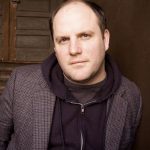
WITS Voices: A Changing Port Townsend
January 24, 2019
By Peter Mountford, WITS Writer-in-Residence
For the seventh year in a row, I’ve been fortunate to be part of a group of WITS writers who’ve gone to Port Townsend for two weeks in December. While Seattle has gone through some dramatic changes in these last seven years—to the extent that I sometimes get lost in my own neighborhood—Port Townsend’s changes come far more slowly, and subtly, which is a big part of its charm.
This year, there was one significant change in the school district, which was that our host school, Blue Heron, transitioned from serving elementary and middle schoolers to being purely a middle school (the new Salish Coast Elementary School opened). A couple of the WITS writers were off in the new school, but since I work with eighth graders, I still didn’t see a dramatic change: I was in the same building, same classroom, with the same wonderful teacher, Ms. Schroeder. But the school lost all of its littler inhabitants, and it was interesting to note the subtle shift in the atmosphere as a result.
It was, in a sense, a classic Port Townsend alteration: so subtle that you might miss it if you don’t pay close attention.
In Port Townsend, you’ll rarely see a building getting knocked down to make room for a large multi-use building. The one Starbucks in town is still in the Safeway. Several years ago, we arrived to find a new bistro and bar on Fort Worden—but, of course, it was housed in a century-old building that used to be the fort’s brig.
Still, things at year Blue Heron felt slightly smoother and clearer. Maybe it was because there were no kindergarteners—adorable as they are—turtling down the hallways with those giant backpacks. The eighth graders might have felt more distinctly aware of themselves as adolescents, not little kids, because they worked hard and wrote so many wonderful stories. This year, I also had five classes, two more than usual, for a total of 120 students, and all of them were enthusiastic about their writing.
The profusion of extraordinary ideas was remarkable: historical fiction, science fiction, experimental fiction, monsters, psychological torment, side-splitting comedies, and one very memorable story about a teenage girl with loving parents who desperately want her to succeed in school, but in their zeal for her to do well, are unable to see the struggles she’s working through. Until, that is, she finally sits them down and asks them to hear to her, until she tells them about what she wants and what she’s concerned about—then, they finally do listen, and it’s as if they’ve woken up and finally understood the person they’re trying to raise.
It’s a Port Townsend kind of end: not flashy or dramatic, but it is powerful and meaningful, everything is a little different in a subtle, but important, way.
 Peter Mountford’s debut novel, A Young Man’s Guide To Late Capitalism, won the 2012 Washington State Book Award in fiction. His second novel, The Dismal Science, was published in 2014. His work has appeared in the Atlantic Monthly, Granta, the New York Times Magazine, Best New American Voices 2008, Boston Review, and elsewhere.
Peter Mountford’s debut novel, A Young Man’s Guide To Late Capitalism, won the 2012 Washington State Book Award in fiction. His second novel, The Dismal Science, was published in 2014. His work has appeared in the Atlantic Monthly, Granta, the New York Times Magazine, Best New American Voices 2008, Boston Review, and elsewhere.